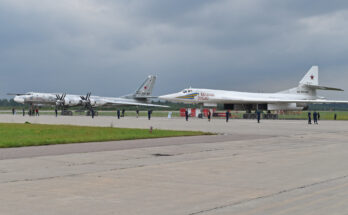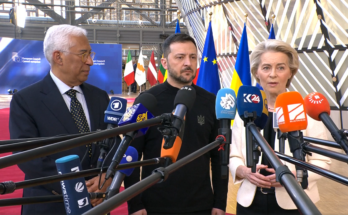by Dan Darling, International Military Markets Analyst, Forecast International.
In an effort to resuscitate its dilapidated and obsolete fleet of MiG-29 Fulcrum combat aircraft, the Bulgarian Defense Ministry has reached out to an unnamed Russian company (likely RSK MiG) for the acquisition of up to 10 repaired fighter engines.
Under the contract inked on November 9, the first two engines are to be delivered by April 30, 2017, with two more arriving every month afterwards until all deliveries are complete. This will allow the Bulgarian Defense Ministry to make five more MiG-29s fly-worthy by the end of 2017.
The purchase occurs against a backdrop of shifting political power inside Sofia and an ongoing effort to reconstitute a combat air power arm that will appease NATO partners pressing select members to do more for their own defense.
Bulgaria’s short-term plan to revive its fighter capability has been two-pronged: to extend the lifespan on its existing fleet of 1980s-vintage Soviet-legacy MiG-29s, and to do so prior to, or in parallel with, a purchase of nine to 16 new or second-hand combat aircraft of a NATO-friendly standard to begin modernizing the fleet starting in 2020. In this way, the country’s fighter capability will be preserved until newly purchased aircraft are online, allowing Bulgaria’s Air Force to conduct joint air-policing missions with its NATO allies.
The issue for Bulgaria has similarly been twofold: the incurred cost of retaining a severely atrophied fleet, regardless of mere interim use; and the fast-tracking of the all-important fighter acquisition, which has remained on the defense procurement table through various administrations since 2006.
With an obligation to NATO to provide air policing over its territory, Bulgaria has long confronted the issue of financing the maintenance of the MiG-29 fleet it originally intended to begin retiring in 2010.
This issue became unavoidable in early 2014 when Russia undertook a stealth takeover of Ukraine’s Crimean Peninsula, exacerbating the gathering tension between the Kremlin and the West.
Around 2006, Bulgaria had undertaken a maintenance deal with Russian Aircraft Corporation MiG covering the Air Force’s remaining 12 MiG-29s (plus another four MiG trainers) that ran through September 2015. At a cost of BGN80 million (around $48 million at the time), the cash-strapped Bulgarian government eventually came to view the arrangement as too expensive.
More to the point, in light of Russia’s actions in Ukraine and its increasingly antagonistic stance towards NATO, Bulgaria – traditionally harboring warm relations with Moscow – soured on the idea of additional defense cooperation with Moscow, particularly when it meant relying on Russia for equipment maintenance support.
In early July 2015, Bulgaria’s Defense Minister Nikolay Nenchev announced plans to sign a maintenance-repair agreement with Poland. A contract for the refurbishment of six MiG-29 engines was ultimately inked in October 2015.
While this deal partially fulfills an immediate priority, the longer-term question for Bulgaria remains of how best to revamp its Air Force combat fleet.
Nenchev pressed the government of Prime Minister Boyko Borisov to move forward on a fighter acquisition, pointing out that the price tag for retaining the MiG-29s through 2029 would be BGN1.6 billion ($901 million) –more costly than a single squadron buy, or a lease of new or used NATO-standard fighters.
The Bulgarian Defense Ministry intends to reach an agreement and sign an acquisition contract prior to the end of the 2016 fiscal year allowing deliveries to run from 2018 through 2021, with in-service capability achieved by 2020.
However, Bulgarian politics may upend these plans – or at least the desired timeline.
Following the presidential election of a Russia-friendly Socialist candidate, former Air Force commander Rumen Radev, Prime Minister Borisov tendered his resignation on November 14. This leaves the governing picture in flux for the short term, possibly crippling the finalization of the fighter acquisition prior to the end of the current deal.
With a caretaker government – the third such for Bulgaria since 2013 – set to take over and a fresh general election looming in late March or early April of next year, it may prove difficult for the interim administration to take the last steps on key government contracts. It should be noted, however, that while serving as Air Force commander in October 2014, president-elect Radev echoed the opinion of Defense Minister Nenchev. The costs of maintaining the MiG fleet through 2029, he stated, were prohibitive enough to cancel out a purchase of newer Western fighters.
The catch comes in returning to Russian sources for much-needed MiG-29 engines.
Previously, Nenchev had complained about dealing with Russia for MiG maintenance due to all the intermediaries involved which, in turn, inflated costs. Noteworthy about the latest contract is the price tag – BGN42 million ($23 million, EUR21 million) – which is higher than that originally projected by the Bulgarian government when it drafted the tender (BGN30 million).
Once again, Bulgaria is dealing with a Russia seeking to splinter what remains of a crumbling EU/NATO united front against Moscow, while retaining a level of economic-energy-industrial dependence from EU countries. By turning to Russia for defense industrial aid – no matter how limited and how brief – Bulgaria signals its practical defense dilemma.
With so much of its military hardware still originally sourced to Russia and a political environment in which leaders are split on being both partner to the EU and NATO while engaging productively with Moscow, it does not appear that Bulgaria will break its chain of dependence on Russian-vintage military hardware and spare parts once and for all in the near future.
Please feel free to use this content with Forecast International and analyst attributions, along with a link to the article. Contact Ray Peterson at +1 (203) 426-0800 or via email at ray.peterson@forecast1.com for additional analysis.
The Forecast International International Military Markets series examines the military capabilities, equipment requirements, and force structures inventories of 140 countries, with corresponding coverage of the political and economic trends shaping the defense market outlook for individual countries and regions.
For 50 years, Forecast International intelligence reports have been the aerospace and defense industry standard for accurate research, analysis, and projections. Our experienced analysts compile, evaluate, and present accurate data for decision makers. FI's market research reports offer concise analysis of individual programs and identify market opportunities. Each report includes a program overview, detailed statistics, recent developments and a competitive analysis, culminating in production forecasts spanning 10 or 15 years. Let our market intelligence reports be a key part of reducing uncertainties and mastering your specific market and its growth potential. Find out more at www.forecastinternational.com



